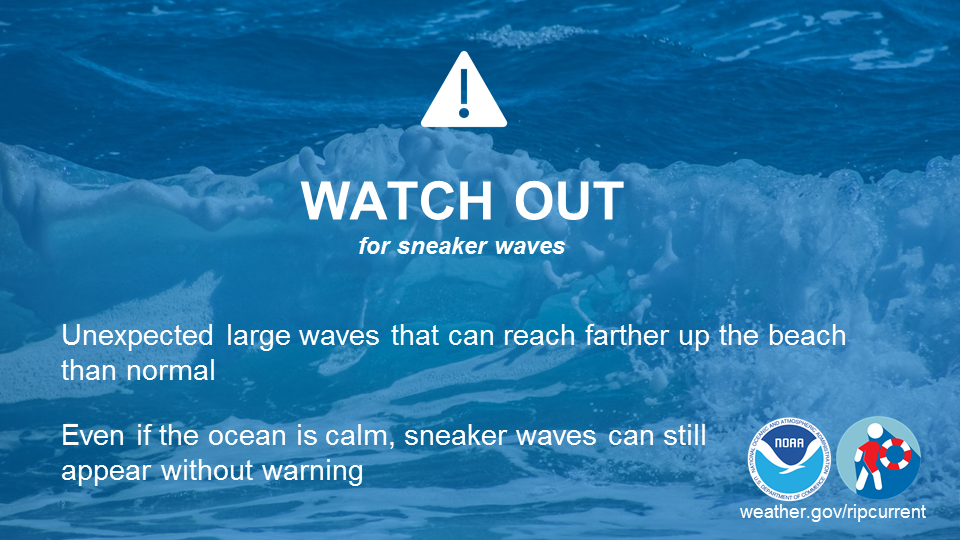Please help the National Weather Service spread these important safety messages on social media! Everyone is welcome to use the text and images provided below to help the NWS build a Weather-Ready Nation.
Facebook
This Spring Break, stay #WeatherReady by knowing how to escape rip currents. weather.gov/safety/ripcurrent #BeachSafety
Twitter
This Spring Break, stay #WeatherReady by knowing how to escape rip currents. weather.gov/safety/ripcurrent #BeachSafety

Facebook
Stay safe this Spring Break with these beach safety tips! weather.gov/safety/ripcurrent-beach #SpringSafety #BeachSafety
Twitter
Stay safe this Spring Break with these beach safety tips! weather.gov/safety/ripcurrent-beach #SpringSafety #BeachSafety

Facebook
The United States Lifesaving Association (USLA) estimates that over 100 people die each year due to rip currents the in US. Break the Grip of the Rip®! weather.gov/safety/ripcurrent #SpringSafety #BeachSafety
Twitter
Every year, over 100 people die from rip currents in the US. Break the Grip of the Rip®! weather.gov/safety/ripcurrent #BeachSafety #SpringSafety

Facebook
Trips to the beach aren't always fun in the sun. From strong rip currents to dangerous marine life, discover the Nine Dangers at the beach. http://oceanservice.noaa.gov/news/features/july13/beachdangers.html #BeachSafety #SpringSafety
Twitter
Have fun but be safe at the beach! Discover the Nine Dangers at the beach. https://1.usa.gov/1GIfD3L #BeachSafety #SpringSafety

Facebook
Only swim at a beach with on duty lifeguards. The chance of drowning at a beach with lifeguards is 1 in 18 million. weather.gov/safety/ripcurrent #SpringSafety #BeachSafety
Twitter
Only swim at a beach with on duty lifeguards. weather.gov/safety/ripcurrent #SpringSafety #BeachSafety

Facebook
Spending time in the sun on vacation this spring and summer? Apply plenty of sunscreen! Also keep in mind that heat-related illness is a possibility if you don’t take certain precautions. Find out more about heat-related illnesses and how to prevent them at www.weather.gov/heat #HeatSafety
Twitter
Spending time in the sun? Apply sunscreen and avoid heat-related illness: www.weather.gov/heat #HeatSafety

Facebook
The United States Lifesaving Association (USLA) advises beachgoers to enter the water feet first. The USLA says, “serious, lifelong injuries, including paraplegia, occur every year due to diving headfirst into unknown water and striking the bottom.” Check for depth and obstructions before diving. weather.gov/safety/beachhazards #BeachSafety #SpringSafety
Twitter
To avoid injuries at the beach, always enter the water feet first.weather.gov/safety/beachhazards #BeachSafety #SpringSafety

Facebook
Sneaker waves are unpredictable waves which happen most often on the west coast. They are large waves which can appear without warning and travel much farther up the beach than normal, even when the ocean seems calm. When at the beach, always stay alert and #WeatherReady. weather.gov/safety/beachhazards #BeachSafety #SpringSafety
Twitter
Sneaker waves are unpredictable waves which happen most often on the west coast. weather.gov/safety/beachhazards
